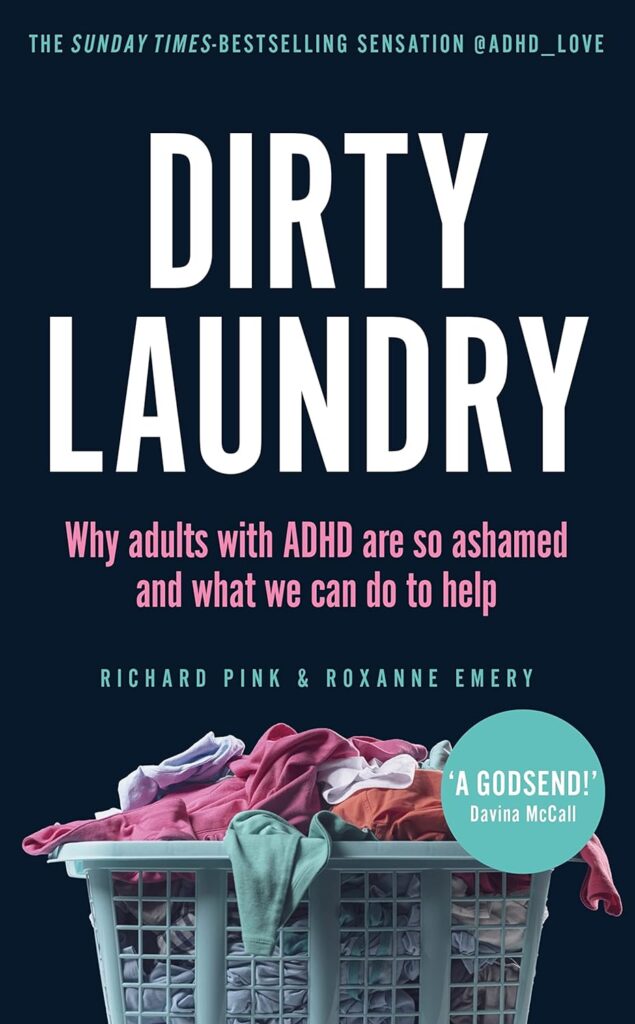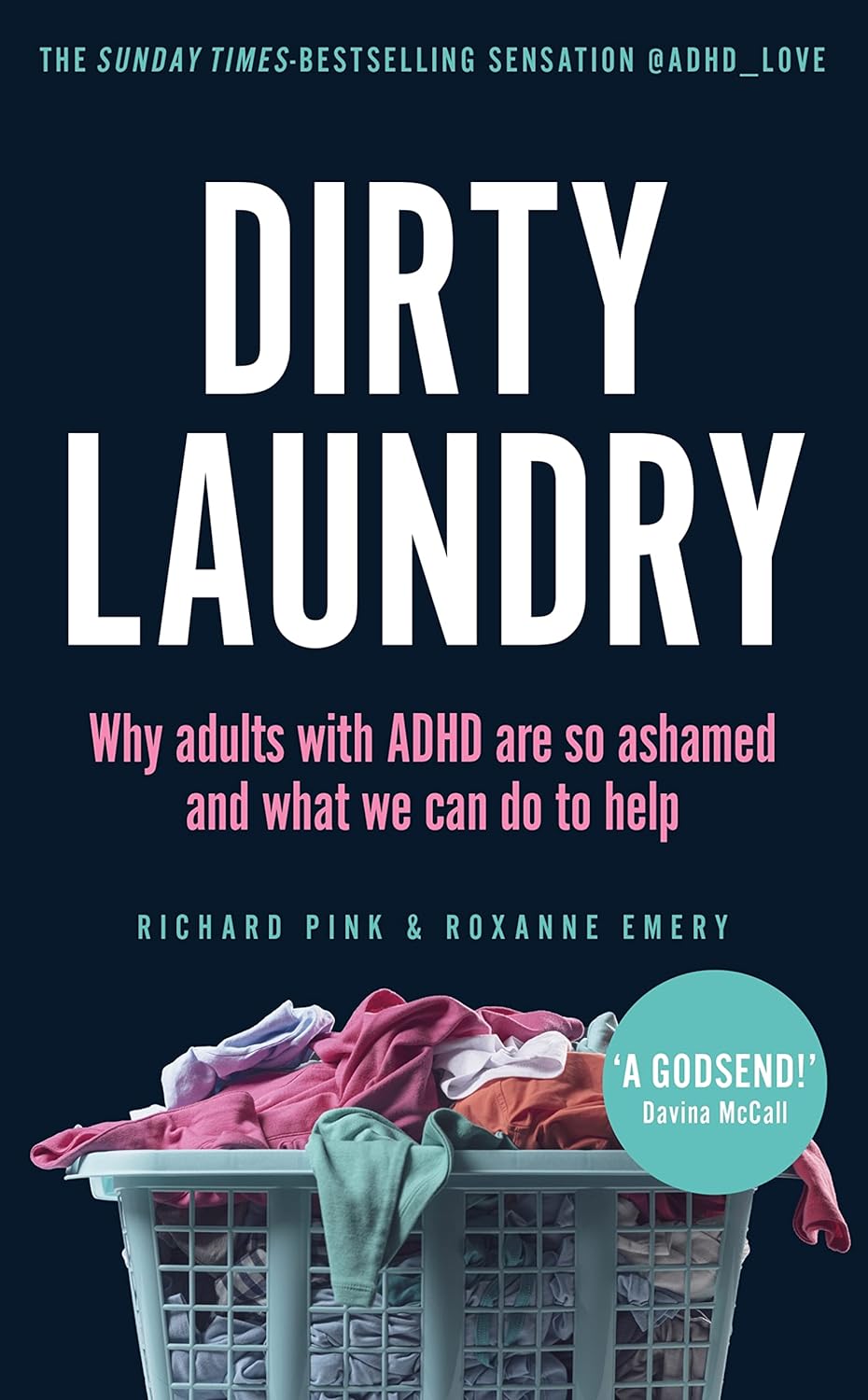We are from Ukraine ![]()

Introduction:
When I first stumbled upon the Dirty Laundry book, its title alone piqued my curiosity, but little did I know the profound impact it would have on me. This isn’t just any novel; it’s a revelation that delves deep into the complexities of human nature, secrets, and the truths we hide even from ourselves. Its significance is magnified by the way it tackles contemporary issues, notably including an insightful exploration of Dirty Laundry book ADHD, making it a beacon for those seeking to understand the nuances of living with this condition. The anticipation for the Dirty Laundry book has been palpable across various literary circles, hailed for its raw honesty and compelling storytelling. My encounter with this masterpiece was serendipitous, turning the pages felt like peeling back layers of my own untold stories. It resonated with me on a deeply personal level, prompting a desire to share my thoughts and reflections with you on Book-Website. The Dirty Laundry book, especially its nuanced portrayal of Dirty Laundry book ADHD, offers a rare lens through which we see the characters navigate their lives, making it an indispensable read in our times.
The Essence of the Dirty Laundry Book
The Dirty Laundry book stands as a testament to the complex web of secrets, revelations, and their seismic impacts on personal relationships. It’s a narrative that intricately navigates through the veiled truths of its characters, presenting a vivid exploration of the human condition. What significantly enhances the depth of this exploration is the book’s thoughtful portrayal of individuals grappling with ADHD. The “Dirty Laundry ADHD book” aspect provides a poignant and accurate reflection of the challenges, misunderstandings, and strengths associated with ADHD, woven seamlessly into the fabric of the storyline. This unique element not only broadens the narrative’s appeal but also offers a much-needed platform for understanding ADHD in the context of everyday lives and relationships. Through a delicate balance of complex characters and relatable plotlines, the author skillfully mirrors real-life situations and moral dilemmas, making Dirty Laundry book a mirror to society’s often unspoken complexities. The inclusion of ADHD enriches the narrative, adding layers of meaning and sparking important conversations around mental health and acceptance.
The Author’s Journey
The journey behind the creation of the Dirty Laundry book is as compelling as the narrative itself. The inspiration for writing “Dirty Laundry” stemmed from a blend of the author’s personal experiences and keen observations of the world around them. It was their intention to craft a story that resonates on a universal level, yet feels intimately personal, reflecting the nuanced dynamics of secrecy and revelation within human relationships. The path to bringing “Book Dirty Laundry” to life was neither straightforward nor free of obstacles. From the initial concept to the moment it hit the shelves, the author navigated through a maze of challenges, including writer’s block, the quest for the perfect narrative voice, and the meticulous process of editing. Yet, each hurdle was met with determination and served as a stepping stone towards triumph. The publication of the Dirty Laundry book marked not just the culmination of years of hard work, but also a significant personal achievement for the author. This book stands as a testament to their unwavering commitment to storytelling and their belief in the power of literature to unveil the complexities of the human spirit.
Thematic Exploration and Analysis
The Dirty Laundry book dives deep into the essence of human vulnerability, particularly through the lenses of secrets, authenticity, and redemption. Its narrative intricately dissects how the burden of hidden truths can shape, and sometimes distort, the course of an individual’s life. A remarkable aspect of “Dirty Laundry” is its sensitive portrayal of ADHD, which adds a profound layer to its thematic exploration. The “Dirty Laundry book ADHD” storyline offers a unique perspective on authenticity, highlighting the struggles and triumphs of living with ADHD in a world that often misunderstands or stigmatizes it. This inclusion enriches the narrative, making “Book Dirty Laundry” not just a tale of personal struggles but also a commentary on the societal challenges faced by individuals with ADHD. Through vivid character arcs and poignant scenarios, the book showcases the journey towards redemption, underscored by the courage to confront and embrace one’s truth. These themes are not only central to the plot but also resonate with contemporary societal issues, making “Dirty Laundry” a mirror to the multifaceted nature of human existence and the universal quest for understanding and acceptance.
Character Development and Interpersonal Dynamics
In the Dirty Laundry book, the intricate development of characters and their interactions stand at the forefront, offering a compelling exploration of human nature and the complexities of relationships. Each character in “Book Dirty Laundry” embarks on a personal journey that not only contributes to their development but also intertwines with the overarching message of the narrative. A pivotal element is the book’s portrayal of ADHD, specifically through the “Dirty Laundry book ADHD” storyline, which adds depth to character interactions and growth. This aspect highlights the challenges and misunderstandings that often accompany ADHD, while also showcasing the strengths and unique perspectives individuals with ADHD bring to their relationships. The dynamics between characters are meticulously crafted, revealing the impact of secrets, the struggle for authenticity, and the path to redemption. These interactions are a testament to the author’s understanding of the delicate balance between individual identity and the influence of interpersonal relationships. Through “Dirty Laundry,” readers are invited to reflect on the importance of empathy, acceptance, and the transformative power of understanding both oneself and others.
The Impact of the Dirty Laundry Book on Readers and Society
The Dirty Laundry book has left an indelible mark on me, much like it has on a broad spectrum of readers. Its unflinching exploration of themes such as the weight of secrets and the quest for authenticity, coupled with a poignant depiction of ADHD through the “Dirty Laundry book ADHD” storyline, has ignited important conversations about these issues in society. The nuanced portrayal of ADHD in the narrative not only enhances the book’s depth but also offers a bridge for empathy and understanding towards individuals experiencing life through this lens. Reader reactions, as seen in discussions, reviews, and across social media platforms, reflect a wide range of emotions and insights, from identification with the characters’ struggles to appreciation for the book’s contribution to breaking down the stigmas associated with mental health. Dirty Laundry ADHD book has sparked a dialogue that transcends the pages of the book, encouraging a societal shift towards more inclusive and compassionate perspectives. Witnessing the ripple effect of the Dirty Laundry book in fostering open discussions on previously taboo subjects has been both enlightening and inspiring, underscoring the power of literature in effecting positive change.
“Dirty Laundry” in the Broader Literary Landscape
The Dirty Laundry book carves a unique niche within the literary world, distinguishing itself through its authentic and nuanced portrayal of human experiences, including the intricacies of living with ADHD as highlighted in the “Dirty Laundry book ADHD” perspectives. When compared to other works in its genre, “Dirty Laundry” stands out for its bold exploration of themes such as secrets, authenticity, and redemption, handled with a depth and sensitivity that resonate with a wide audience. Its contribution to literature is significant, offering a fresh lens on ADHD and mental health, areas often overlooked or stereotyped in mainstream narratives.
In the context of contemporary literary trends, “Dirty Laundry” aligns with the growing movement towards stories that offer both representation and insight into diverse mental health experiences. Its candid examination of ADHD by Dirty Laundry ADHD book, interwoven with universal themes of human connection and self-discovery, positions the book as a pivotal work that challenges and enriches the literary landscape. The potential legacy of the Dirty Laundry book lies in its ability to foster understanding and dialogue around ADHD and mental health, inspiring both readers and writers to approach these topics with newfound empathy and awareness. Through the Dirty Laundry book, literature takes a step forward in reflecting the complexities of the human condition, marking a significant moment in the ongoing evolution of storytelling.
Conclusion:
The journey through the pages of the Dirty Laundry book has been an enlightening experience, both on a personal level and in the broader context of modern literature. Its candid exploration of complex themes, notably including the nuanced portrayal of ADHD through the “Dirty Laundry ADHD book” perspectives, offers a valuable lens on the human experience. This novel stands as a testament to the power of storytelling to foster empathy, understanding, and dialogue about issues that touch many lives yet remain underrepresented.
I wholeheartedly encourage readers of Book-Website to pick up a copy of the Dirty Laundry book ADHD. This book is not just a story to be read; it’s an invitation to delve into its layers, reflect on its themes, and engage in the vital conversations it sparks. By joining this dialogue, we not only deepen our understanding of the narrative and its characters but also contribute to a larger, ongoing discussion about mental health, authenticity, and the myriad ways we navigate the complexities of life. Dirty Laundry book is more than a book; it’s a catalyst for change, urging us to look beyond the surface and embrace the diversity of human experience with open hearts and minds.

